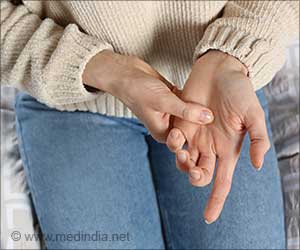Researchers are finding out the various factors which are responsible for malaria infection and their susceptibility and the degree of infection and their link to difference in genetic makeup between different individuals
Researchers are finding out the various factors which are responsible for malaria infection and their susceptibility and the degree of infection and their link to difference in genetic makeup between different individuals.
Rather than focusing on specific genes, Mackinnon and colleagues were interested in the relative contributions of host genetics and other factors to the risk of malaria. To estimate the overall contribution of genetic factors to the difference in disease incidence between individuals within a population, one needs three types of data: (1) disease incidence for individuals over a certain period of time (to be able to determine an individual's risk); (2) information on genetic relatedness of the individuals in the population; and (3) a set-up in which individuals with different levels of relatedness share the same environment and/or where related individuals live in different environments.The researchers studied two populations of children from a malaria-endemic area in Kenya for which they could obtain the necessary data. In one case, they determined incidence of mild clinical malaria in 640 children over a period of 5 years. For the second part, they monitored severe malaria that led to hospitalization and non-malaria hospitalizations in 2,900 children, also over a five-year period.
They found that host genetic factors accounted for about one quarter to one third of the total variation in susceptibility in the populations to malaria, and that household-related factors (i.e. environmental factors) contributed to a similar level. Overall, children living in the 10% of households with the highest malaria incidence had about twice as many infections per year than those living in the 10% of households with the lowest incidence. While Mackinnon and colleagues do not question the long-term benefits of understanding the genetic factors, they conclude, "Identifying and tackling the household effects must be the more efficient route to reducing the burden of disease in malaria-endemic areas". Factors such as suitable conditions for mosquitoes to breed and survive as well as human behavior are likely to play major roles.
"We need to determine what makes the difference between low-risk and high-risk households", Mackinnon says, "but whatever it is, it seems likely to be an easy target using tools such as education and the low-cost, low-tech devices that we already have to hand such as bed nets, residual indoor spraying [with insecticide], and cleaning up back yards for mosquito breeding sites."
Source: Eurkalert










